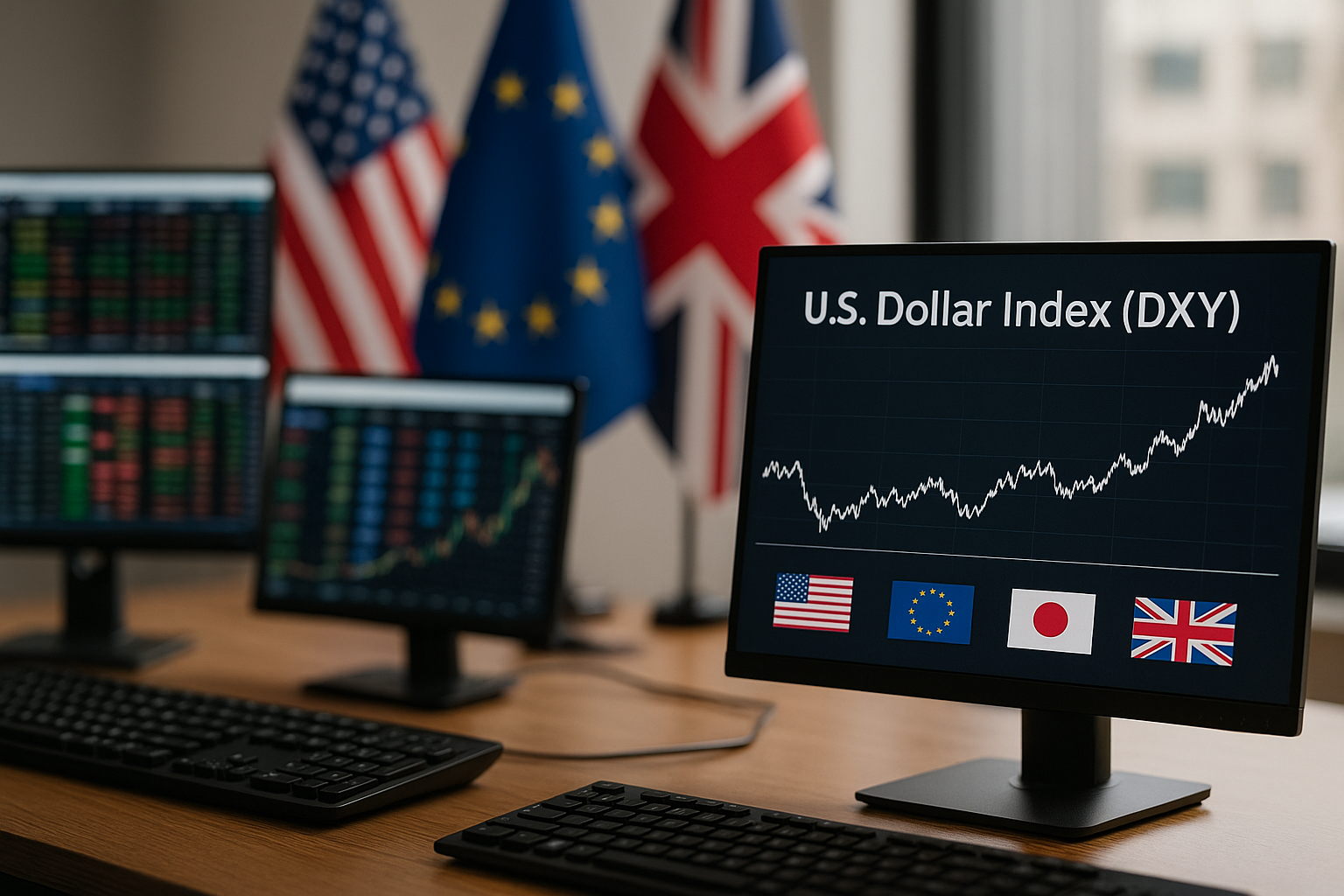Dollar Hits 3-Month High as Traders Pare Rate-Cut Bets
By Tredu.com • 11/4/2025
Tredu

Why the dollar climbed
The dollar hits a 3-month high as traders pare rate-cut bets, a move that reflects shifting views on the Federal Reserve’s path and a mild risk-off tone across assets. After last week’s meeting, investors trimmed the probability of a December reduction, and pricing now implies a slower easing profile through early 2026. Cash moved into Treasuries, equities softened in parts of Asia, and currency markets rewarded safe-haven demand. Reuters reported that the dollar index pushed to its strongest level in three months as the implied chances of a December cut fell markedly from last week’s near certainty.
Fed expectations, suddenly less one-way
Recent commentary from Federal Reserve officials stressed that a December move is possible, not promised. Chair Jerome Powell cautioned that decisions remain data dependent, and other policymakers voiced concern about sticky inflation and still-firm labor conditions. As those remarks filtered through, the market recalibrated, reducing the odds of near-term cuts and lifting the dollar. Reuters noted the swing in probabilities alongside a broader pullback in risk appetite.
Sterling slips, euro softens, yen steadies
The British pound fell after pre-budget remarks from the UK finance minister flagged “hard choices,” a signal that fiscal space is tight as growth lags. The euro eased as the dollar strengthened and as traders weighed the European outlook. The yen, which had been near recent lows, steadied on vigilance from Tokyo, with officials signaling readiness to respond if moves became disorderly. Price action across these pairs matched the day’s headline, the dollar at a 3-month high as traders pare rate-cut bets.
Bonds firm as equities cool
With rate-cut hopes dialed back, long-dated Treasury yields edged lower on haven demand, even as front-end yields stayed sensitive to the policy path. Global stocks paused after a powerful run, led by profit taking in Asia’s technology benchmarks. Futures pointed to a softer open for U.S. equities, consistent with a modest de-risking that often accompanies a stronger dollar and tighter financial conditions. Reuters’ market wrap highlighted the cross-asset mix, including firmer bonds and a stronger dollar index.
Asia’s session set the tone
Asian markets retreated from records, according to Reuters, with the dollar pushing to multi-month highs against the yen and the euro. The Reserve Bank of Australia held rates, yet left the door open to future moves, a stance that kept the Australian dollar on the back foot. Regional equity indices slipped as investors booked gains after a long rally tied to AI optimism and trade de-escalation headlines.
Data vacuum and uncertainty premium
A partial U.S. data blackout has complicated signal extraction, so traders leaned on private surveys and high frequency series. Manufacturing indicators showed ongoing contraction, while services inputs were mixed. In that vacuum, central-bank communication carried extra weight, and markets priced a wider cone of outcomes for December and early 2026. The uncertainty premium favored the dollar, which benefits when investors seek liquidity and safety.
Micro drivers inside the FX tape
Positioning mattered. The euro faced technical resistance near recent ranges, and fresh longs were light after last week’s bounce. Sterling’s slide reflected fiscal caution and lingering inflation risk in the United Kingdom. The yen’s path stayed tethered to U.S.–Japan rate differentials, yet verbal intervention capped weakness, creating a more balanced near-term profile. Commodity currencies faded as oil slipped and as the dollar firmed. Each strand reinforced the broader tape: a bid for the dollar, less conviction on swift easing.
What traders are watching next
Three signposts dominate near-term FX risk. First, incoming U.S. price and labor proxies from private sources, which stand in for official prints while the blackout persists. Second, fresh guidance from Fed speakers, which could nudge probabilities back toward or away from a December move. Third, fiscal headlines from the United Kingdom, since budget choices will shape gilt term premia and sterling’s path into year end. A surprise drop in U.S. inflation proxies would weaken the dollar; sticky readings would extend its support.
Implications for portfolios
For multi-asset investors, a stronger dollar tightens financial conditions, often pressing non-U.S. risk assets and commodities. Hedging ratios may rise for dollar-based allocators with euro and sterling exposure. Corporate treasurers face a familiar playbook, extend dollar hedges where cash flows are predictable, and leave room to add on retracements. For traders, the bias favors buying dips in the dollar while cut odds are being pared, with stops set below last week’s breakout levels.
The headline, repeated plainly
The market story is straightforward for Tredu readers: the dollar hits a 3-month high as traders pare rate-cut bets, and the dollar at a 3-month high as traders pare rate-cut bets is the phrase that best captures the day. It condenses the drivers, fewer cuts priced, risk sentiment softer, and cross-asset flows that favor the greenback.
Bottom line
The dollar’s three-month peak reflects fewer near-term cuts priced, softer risk appetite, and caution from policymakers. Unless incoming data break decisively toward disinflation, the path of least resistance keeps the dollar supported while sterling and the euro stay defensive and the yen trades on vigilance.

How to Trade Like a Pro
Unlock the secrets of professional trading with our comprehensive guide. Discover proven strategies, risk management techniques, and market insights that will help you navigate the financial markets confidently and successfully.


